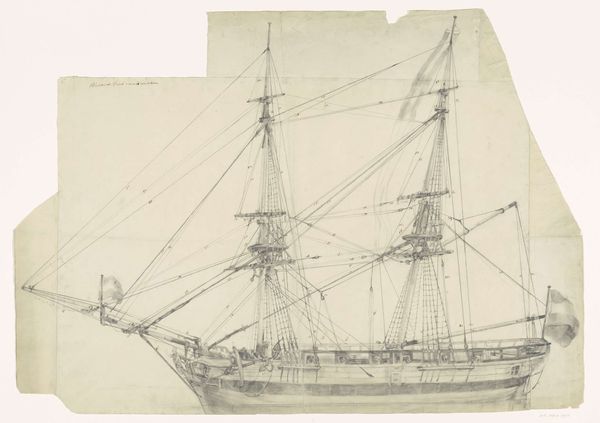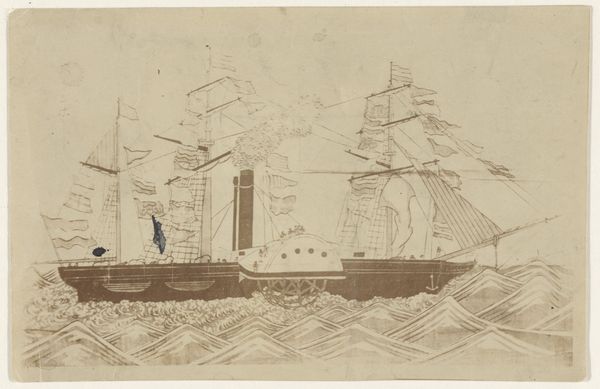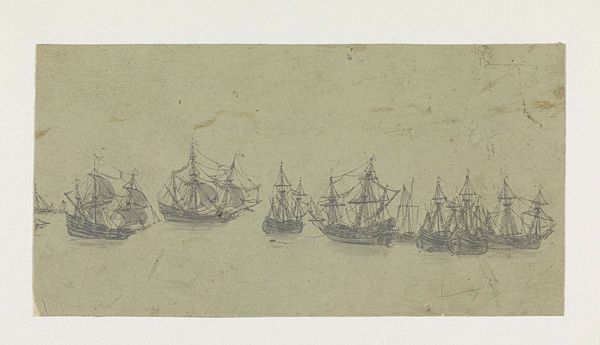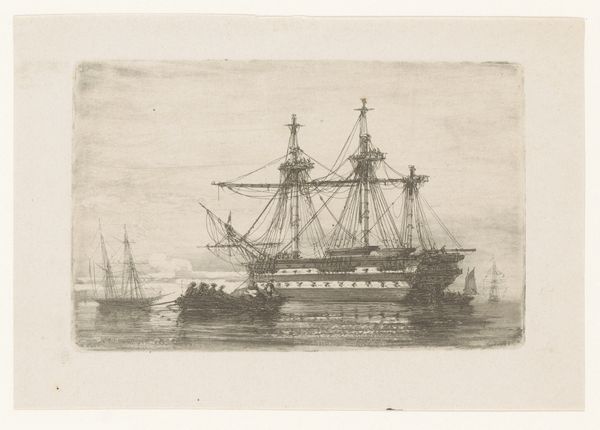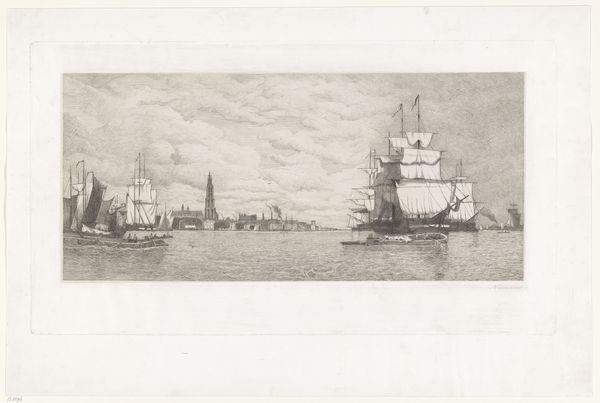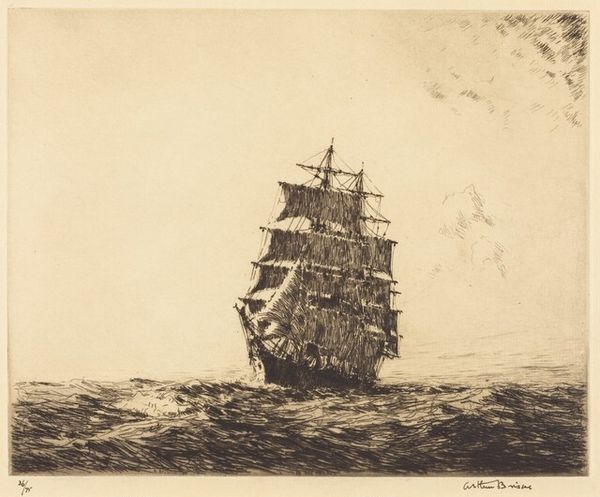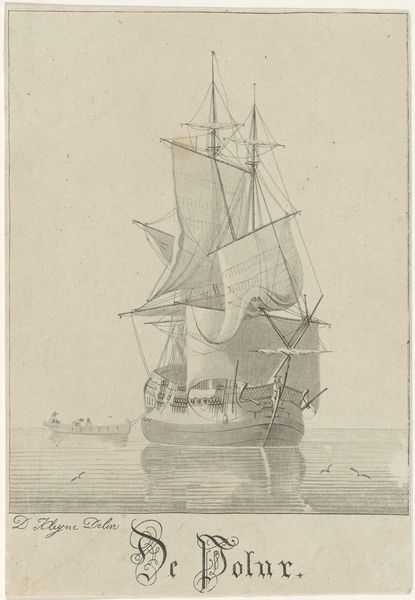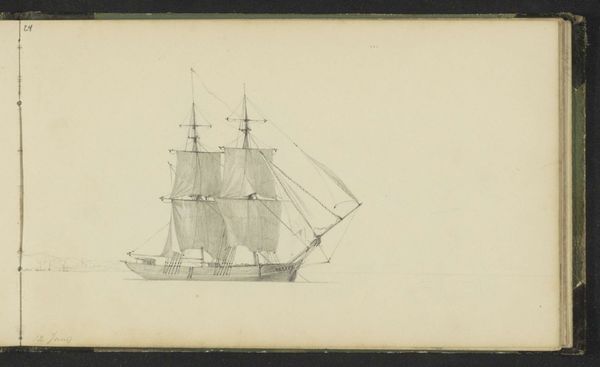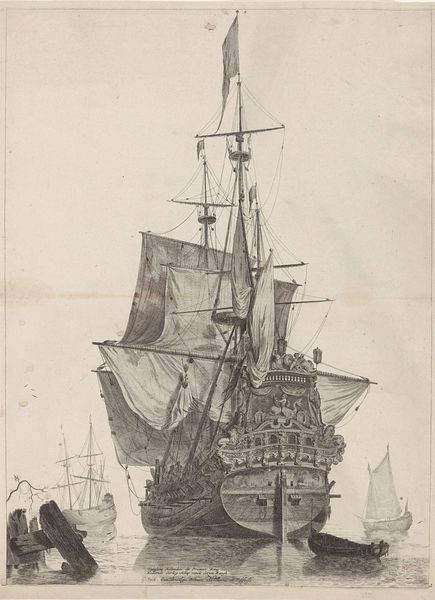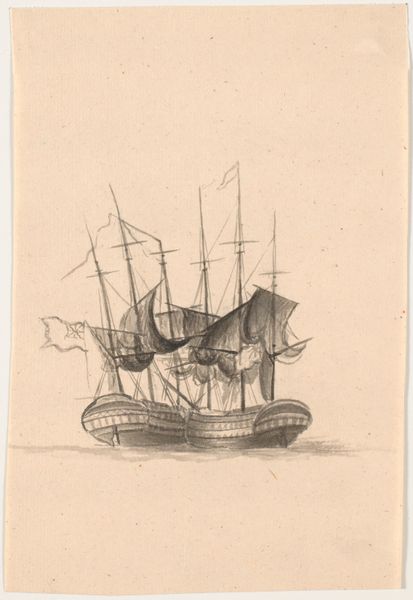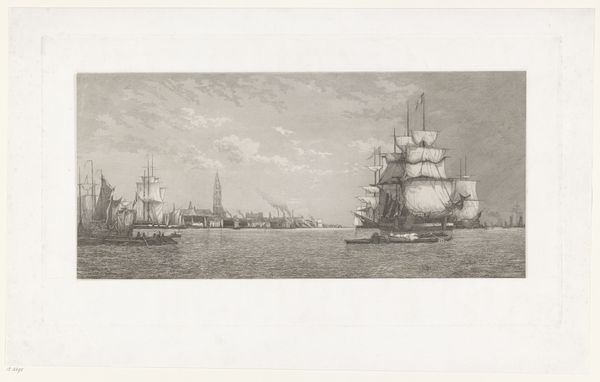
print, etching, engraving
# print
#
etching
#
pencil sketch
#
landscape
#
line
#
engraving
#
realism
Dimensions: plate: 17.3 × 25.08 cm (6 13/16 × 9 7/8 in.) sheet: 26.04 × 34.29 cm (10 1/4 × 13 1/2 in.)
Copyright: National Gallery of Art: CC0 1.0
Editor: We're looking at "Morning Mist," an etching by George Canning Wales, created in 1928. I'm really struck by how serene and almost ethereal the image feels. The way the ships are rendered, it's like they're floating between the water and the sky. What do you see in this piece? Curator: I see a very deliberate construction of a historical narrative. Wales, working in 1928, is consciously evoking a past era of maritime power. The image idealizes sailing vessels; these were largely being displaced by steamships. Wales presents this vision through a very accessible and reproducible medium of print, thereby democratizing what was becoming an elite subject matter. Notice how the composition subtly emphasizes the size and power of the larger ship, positioning it as a kind of protagonist against the softer, more distant vessel. Editor: That makes me think about how prints circulated in society at this time. Would something like this have been displayed in homes? Curator: Absolutely. Prints, especially etchings and engravings, were vital means of disseminating images. This piece could have served as a signifier of sophistication or a reminder of American maritime history and its connection to global trade. By creating this "Morning Mist" in print form, Wales invites the viewer to participate in the visual discourse, questioning how these scenes influenced broader public perception of historical events and economic power structures. How does the title factor into the image’s broader message? Editor: That's really insightful. It also leads me to appreciate how artists can intentionally create these echoes of the past. Thinking about the title, the "Mist" element softens the harsh realities of maritime trade, romanticizing the scene. It creates this idyllic and very consumable piece of art. I hadn't thought about prints being used to "democratize," as you put it, elite subjects. Curator: Exactly! We often see prints in the shadow of painting. But they did important cultural work, creating communities of viewers who felt part of that shared vision. Looking at this from that perspective really opens the piece up, I think.
Comments
No comments
Be the first to comment and join the conversation on the ultimate creative platform.
